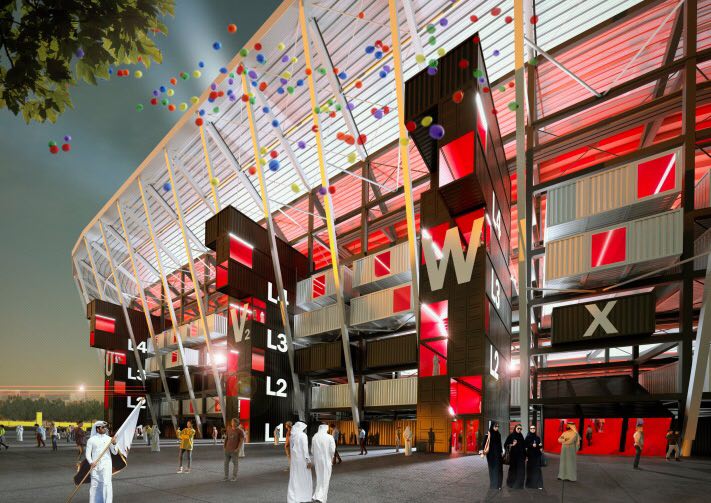Giving green touch to stadiums abroad
By Zhong Nan | China Daily | Updated: 2018-10-29 09:36

"By adopting container modules, the stadium's construction time can be cut by three years. It can also save building materials and reduce emissions," said Wang Fei, project manager of CIMC's Yangzhou unit.
The modular method is a form of prefabricated construction that allows major structures or components of a building to be made in factories and transported to a construction site for assembly, thereby saving time and reducing waste.
Designed by a Spanish company, the use of modular container for the Ras Abu Aboud Stadium is inspired by the biggest port in Qatar, the Doha Port, according the Qatari government's website.
The Ras Abu Aboud Stadium will be seven floors high and cover 450,000 square meters. It will accommodate 40,000 spectators.
Wang said the biggest advantage of the modular construction method is the structure will be detachable. That means, the container modules can be re-used for other purposes - for example, to serve as public housing and other utility purposes.
Moreover, the place where the original stadium stands can be quickly turned into a green park.
CIMC started to export container modules to global markets in 2005. It supplied this product for Brazil's Antarctic research station project in 2017.
"As it usually demands bucket loads of cash to maintain a stadium in a good condition, it is fairly economical for small countries such as Qatar, Bahrain and Kuwait to adopt this method to build the stadium for holding big-ticket international matches," said Zhao Yongzhi, a researcher at the Institute of Industrial Economics, which is part of the Chinese Academy of Social Sciences in Beijing.
Unlike stadiums in the United States, Japan and Europe, where companies own venues, he said most of the giant stadiums, particularly those in developing economies such as China, Turkey and Indonesia, were built for big games, making them single-purpose venues that are hard to be transformed for use for other events. That applies particularly to outdoor stadiums.
Zhao of CASS said container modules should be introduced more in developing countries as most stadiums there incur losses, including many A-list stadiums built for world-level or national-level games such as the Olympics and the national games. The majority of them are built and operated by local-level governments.
Eager to pursue green development and upgrade its export product structure, China has already promoted modular construction domestically to improve both its living and business environment, he said.
China plans to create more supportive policies to promote the use of prefabricated construction to the extent of 30 percent of new buildings within 10 years, according to a guideline issued by the central government in 2016.
In addition to countries with limited land resources, other countries are adopting the modular construction method, Wang said.
To date, the Shenzhen-headquartered CIMC has shipped more than 35,000 prefabricated hotel rooms and apartments for its clients in the US, the United Kingdom, Japan, Australia and other countries. It has also seen notable demand growth from markets related to the Belt and Road Initiative over the past three years.
Thanks to the strong growth momentum from its production of containers, airport facilities, vehicles, energy, chemical and food equipment, CIMC's profit surged 21 percent year-on-year to 965 million yuan ($139 million) in the first half of this year, from a revenue of 43.56 billion yuan, up 30 percent year-on-year.
























